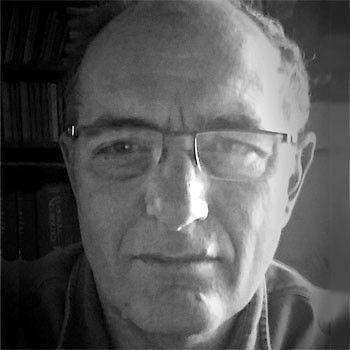
neurologist, neuro-oncologist
Graduated with MD in medicine from the Telv Aviv University in 1996, certified in neurology 2002, completed a fellowship in neuro-oncology in the M.D. Anderson Cancer Center in 2004. Primarily active in oncological symptom management in the Assaf HaRofeh Medical Center since 2005. First witnessed the medical benefits of cannabis directly circa 2009, and since then acquired authority to issue permits for medical use of cannabis in cancer patients and accumulated experience with over 4000 patients issued such permits.
| 2019 | Medical use of cannabis – an overview of the current condition | Abstract |
|
Highlight certain observations based on the relatively recent statement on the issue by the World Health Organization. Observations in context and discuss the role of the medical establishment in the assimilation of cannabis based products into the field of standard medicine. |
||

analytical chemist, researcher
Lumír Ondřej Hanuš is a Czech analytical chemist and leading authority in the field of cannabis research. In 1992, he and William Anthony Devane isolated and first described the structure of anandamide, an endogenous cannabinoid neurotransmitter. Recipient of numerous awards in the fields of chemistry and medicine (Memorial Medal, Doctor honoris causa, Jack Herer Award, Outstanding Immigrant Scientist ).
In 2010 and 2011 he participated in seminars in the Czech Parliament, focused on the establishment of treatment with cannabinoids.
| 2014 | From Cannabis to endocannabinoids – from ancient to present medical use | Abstract |
|
The lecture deals with the history of the use of cannabis as a medicine in the course of millennia. It describes the way leading to the discovery of the psychoactive compound (tetrahydrocannabinol) in cannabis. Consequently, efforts to clarify the effects of cannabis in the body, which led to the discovery of cannabinoid receptors and consequently to the body’s own compounds, called endocannabinoids, which mimick the cannabinoid effects in the body is explained. Present cannabis use in medicine is shown on the therapeutic use of cannabis in Israel. |
||
| 2015 | From hemp to its present medical use | Abstract |
|
The lecture is devoted to the history and discoveries of active compounds in the hemp and brain and to its worldwide medical use. Stressed are advantages and possible disadvantages of this medical plant. |
||
| 2017 | Are in cannabis curative (medicinal) just only cannabinoids? | Abstract |
|
From ancient times cannabis for treatment was used exclusively as the plant or its parts. At present time the most studied compounds are cannabinoids. Is it enough to know concentrations of these compounds in a particular strain or are in a game also the other content compounds. This lecture tries to answer this question. |
||
| 2017 | Are in cannabis curative (medicinal) just only cannabinoids? | Workshop |
| 2019 | Are we treating with cannabis correctly? | Abstract |
|
The lecture briefly summarizes the history of cannabis in treatment, the discovery of cannabinoids and the entire endocannabinoid system. Then it deals with the treatment of cancer, autism and female diseases and importance of correct chemotypes of this plant in the treatment of the patient. |
||
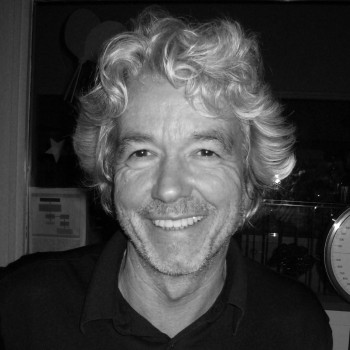
neurologist, researcher
Literature: see here
| 2019 | Slovenian experience with the use of cannabis and domestic cannabis products in the treatment of persistent epilepsy, certain epileptic syndromes, and encephalopathies of the childhood period | Abstract |
|
Refractory epilepsies, resistant to regular antiepileptic drugs (AEDs) in paediatric population continue to be a challenge worldwide. Despite an increasing number of new AEDs approximately 1 in 3 patients continues to have seizures. Cannabidiol (CBD), one ofmany constituentsof the Cannabis sativa or marijuana plant, has received renewed interest in the treatment of epilepsy. Cannabis has being used as treatment of seizure disorders nearly 5000 years ago in Asia and during 18th and 19th centuries also in Europe and United States and was also found in pharmacopeas. However it has been moved into Schedule I class after Marijuana Act in 1937. After nearly 80 years of prohibition today highly purified CBD has already got Food and Drug Administration (FDA) approval, while still waiting for EMA approval in Europe, and was moved as a substance to Schedule V class. On the other hand artisanal formulations of CBDare readily available and are seeing increased use in our patient population as well. We are presenting our own data of treatment of resistant epilepsies/encephalopathies with pure CBD, where we got excellent results: in a group of retrospectively studied children with severe forms of epilepsy, treated by cannabidiol alone there was 77 % reduction of seizures and 21% of children were even seizure free. Later studies, especially some systematic reviews, reported similar data from other retrospective, non-randomized studies using cannabidiol alone, but including also some studies using cannabis plant extracts with similar outcome. When studying retrospectively those children whose parents admitted that they were using different artisanal products of cannabis for their children epilepsy is posing additional problems: potential benefits of artisanal cannabis preparations in the treatment of epilepsy are difficult to quantify due to the lack of controlled trials, variability in artisanal cannabis preparations which represents a key challenge and concern for the use of artisanal products for medical treatment of epilepsy, given the lack of both regulation and verification of such products. However the comparisson between those studies using purified/isolated cannabis products and those using artisanal product has many challenges. As shown by Sulak et al. response to artisanal cannabis is promising: uncontrolled observational data of 272 patients, have shown some degree of seizure reduction in 86% of cases and 10% had complete cessation of seizures. Our own data on small group of children useing atisanal cannabis are aslo promising.After half a year the parents were given the questionnaire and the Caregiver Global Impression of Change Scale (CGIC) to fulfill. The responses were low – 59% of all questionnaires sent, posing another possible bias, that those parents where artisanal cannabis was not effective did not want to report this as was the case also in some other studies. However we were surprised with the findings on the CGIC, which showed excellent results of 93% improvement. In a recent study of cannabidiol use in Lennox-Gastaut syndrome patients the results of CGIC scores were 57% in the 20 mg/kg/d group and 66% in the 10 mg/kg/d group, compared with 44% in the placebo group, reporting overall improvement. Further studies comparing eficiency of isolated cannabinoids and products made form the whole plant are in process and the results will be available shortly. |
||

psychiatrist, researcher
Dr. Sue Sisley MD is an Arizona-based physician practicing Internal Medicine and Psychiatry.
She works as Medical Director for medical cannabis license holders in 11 different states/territories from Hawaii to Puerto Rico to New York.
Sue serves as Site Principal Investigator for the only FDA-approved randomized controlled trial in the world examining safety/efficacy of whole plant marijuana in combat veterans with treatment-resistant post traumatic stress disorder PTSD. Dr. Sisley is on faculty at Colorado State University PUEBLO campus, recruited for core planning team to organize the CSUP "ICR Institute of Cannabis Research" in Pueblo, Colorado. Dr. Sisley has been a Member of Nevada ILAC Medical Cannabis Commission for the past two years outlining regulations for laboratory testing including limits on pesticides, residual solvents and other guidelines that are currently being used as a model for other states medical cannabis laws. She also serves on the Steering Committee for Thomas Jefferson University Lambert Cannabis .
| 2015 | The use of medical marijuana to treat patients with treatment-resistant Post-Traumatic Stress Disorder (PTSD) | Abstract |
|
The use of medical marijuana to treat patients with treatment-resistant Post-Traumatic Stress Disorder (PTSD) is supported by a number of sources, including research in lab animals, fMRI imaging in humans, and anecdotal reports from countless health practitioners and patients. Additionally, clinical research in Israel evaluating medical marijuana as treatment for PTSD has been promising. This study will test four strains of smoked marijuana, each containing different concentrations of active cannabinoids, in two three-week stages, as a pharmacological agent to manage PTSD symptoms among 80 American war veterans. This study is a collaboration between me and researchers from Johns Hopkins University, University of Colorado, and University of Pennsylvania. This will be the first randomized controlled crossover clinical trial in the United States testing the therapeutic potential of marijuana for PTSD. The primary measured outcome will be the Clinician Administered PTSD Scale (CAPS-5), alongside extensive secondary outcomes including sleep patterns, depression, withdrawal symptoms, metabolic and inflammation panels, and self-reporting by the patients. |
||
| 2015 | The use of medical marijuana to treat patients with treatment-resistant Post-Traumatic Stress Disorder (PTSD) | info |
|
At the workshop we will learn about:
|
||
| 2017 | Researching Medical Cannabis: Navigating Barriers To Efficacy Research | Abstract |
|
Lecture will discuss the barriers to Cannabis efficacy research and myriad ways US government has systematically impeded this work. We will use our recent battle to implement the veterans research as prime example of this research blockade trying to use medical marijuana to treat patients with treatment-resistant Post-Traumatic Stress Disorder (PTSD). This FDA approved Phase 2 cannabis clinical trial is supported by a number of sources, including research in lab animals, fMRI imaging in humans, and anecdotal reports from countless health practitioners and patients. Additionally, clinical research in Israel evaluating medical marijuana as treatment for PTSD has been promising. MAPS' study will test four strains of smoked marijuana, each containing different concentrations of active cannabinoids, in two three-week stages, as a pharmacological agent to manage PTSD symptoms among 76 American war veterans. This study is a collaboration between Dr. Sue Sisley, and researchers from Johns Hopkins University, University of Colorado, and University of Pennsylvania. This will be the first randomized controlled crossover clinical trial in the United States testing the therapeutic potential of marijuana for PTSD. The primary measured outcome will be the Clinician Administered PTSD Scale (CAPS-5), alongside extensive secondary outcomes including sleep patterns, depression, withdrawal symptoms, metabolic and inflammation panels, and self-reporting by the patients. Four Learning objectives:
|
||
| 2017 | Researching Medical Cannabis: Navigating Barriers To Efficacy Research | Workshop |
| 2019 | Research barriers in the science of cannabis | Abstract |
|
Discuss strategies US government has employed to systematically impede cannabis efficacy research & challenges trying to push natural cannabis flower through the entire FDA drug development process.
|
||

microbiologist, researcher
Tanja Bagar is the CEO and Chairman of the Expert Council of the International Institute for cannabinoids. She is active in the academic sphere, lecturing microbiology, biochemistry and topics on ecology at the Faculty Alma Mater Europaea and cooperates scientifically with the Austrian College of Health and Development. She is a member of the Pomurje Academy of Arts and Sciences, Slovenian Biochemical Society, the Slovenian Association of Psychologists and is one of the founders of the society for the preservation and protection of the environment. She has extensive research experience gained in laboratories in Slovenia and abroad. Since 2013, she participates as a peer reviewer for the national competition of research projects, organized by the Association for Technical Culture of Slovenia. For her social engagement she received the Slovenian social responsibility award HORUS and is an honorary member of the social cooperative KonopKo.
She attended various conferences on cannabinoids and endocannabinoid system at a national and international level. She holds knowledge in the fields of microbiology, cell biology, biochemistry and molecular biology in conjunction with the endocannabinoid system and the functioning of cannabinoids, laboratory analysis ... She has completed an intensive four week e-education program Concepts of Cannabis Science I, carried out by Kenevir Research (Oregon, USA), and also follow-up program Concepts of Cannabis Science II.
| 2019 | Mitochondria and their interaction with cannabinoids | Abstract |
|
Mitochondria are dynamic and complex cellular organelles that are involved in a wide range of cellular events and are essential for tissue adaptation, survival, death, and renewal. In addition to their important role in energy metabolism making them popularly known as the cellular powerhouse, mitochondria are malleable structures that are also intimately involved in controlling cellular redox status, cellular signaling, calcium homeostasis, and cell death and autophagy processes. Thus, mitochondria have emerged from simply being the powerhouse of the cell to being at the forefront of numerous research avenues. In fact, mitochondrial perturbations evoked by physiological and pathological stimuli have been shown to contribute towards the pathogenesis of many diseases and mitochondrial research now constitutes a very significant and ever-expanding research area. It is now understood that mitochondria and their associated pathways may represent areas for the development of preventive and therapeutic strategies to potentially mitigate diseases/disorders such as diabetes, obesity, neurodegeneration, epilepsy, sarcopenia and many others. Cannabis sativa L. with its myriad of bioactive molecules is showing very promising potentials to modulate the function and dysfunction of mitochondria, thereby enhancing heath and positively influencing disease progression. Understanding how omega 3 and cannabinoids alter the cellular powerhouse-mitochondria is also adding substantially to our understanding of how these molecules effect our biochemistry. |
||

pharmacist, researcher
Dr Dorothy H Bray is ImmunoClin’s founder with sound expertise in pharmaceutical business development, pre-clinical and clinical development for novel pharmaceuticals and functional food products. She served in several key positions at GlaxoSmithKline Glaxo Wellcome Inc, USA, Glaxo Wellcome, UK and the Wellcome Foundation, UK. Dr Bray has extensive network of collaborations with pharmaceutical companies, governments, and non-government organizations in key developed and emerging markets and is is the European Commission's Scientific Expert since 2003. She acts as a business advisor to multiple biotechnology companies. In addition to her industrial activities she served as a Member of the Scientific Staff and the Head of Scientific Business Development of The Medical Research Council Clinical Trials Unit in the UK, currently holds an honorary Senior Lecturer position at the Royal Free School of Medicine, University of London and serves as a reviewer for a number of scientific journals.
Industrial positions: 1993—present
ImmunoClin Corporation: Director, President and CEO since December 2013: Brand development and leadership to formulate and implement strategic plan to establish IMMUNOCLIN CORPORATION (IMCL) as a leader in personalised medicine approach providing solutions to challenges in delivering patient focussed care. Cannabis Science, Inc.: Head of Scientific Advisory Board since November 2014 (acted as Director, President and CEOfrom May 2013—May 2015): Strategic consulting, including business plan and clinical development for Company’s products, CANNABIS SCIENCE works with leading experts in drug development to develop, produce, and commercialize novel therapeutic approaches using cannabis based products with the initial focus is on the skin cancers and neurological conditions. Omnicanna Health Solutions, Inc: Board Director: May 2013—present (President and CEO from May 2013—May 2015): With the aid of scientific research, OMNICANNA Health Solutions is developing effective cannabinoid formulation-based health and wellness solutions as well as cosmeceutical, nutraceutical, and food brands.ImmunoClin Ltd: Director: 2002—present (business owner till December 2013).
Working to development personalized medicine and nutrition platform to develop novel solutions to manage ageing society. ImmunoClin's portfolio includes prognostic markers for cardiovascular and Alzheimer's diseases, novel broad-spectrum anti-infectious therapy and innovative e-biosensor to detect bacteria, viruses and small molecules. Based upon its R&D in nutrigenomics ImmunoClin is developing novel nutritional products to combat inflammatory conditions.
GlaxoSmithKline: 1993–2002: Directed large international clinical research programme in collaboration with multiple academic and commercial organizations to develop new interventions in infectious diseases including HIV Director, Clinical Development HIV, with global responsibility, GlaxoSmithKline, UK: 1998–2002 Senior Medical Strategy Head, Glaxo Wellcome, Inc: 1997–1999 Principal Clinical Research Scientist, Antivirals, Glaxo Wellcome, UK and USA: 1995–1997 Senior Clinical Research Scientist, The Wellcome Foundation, UK: 1993–1995.
Academic Research: 1979—present
Honorary Senior Lecturer, Royal Free and University College Medical School: 2002—present: Application of clinical immunology in development of pharmaceutical interventions in the area of infectious diseases Head, Scientific Business Development, The Medical Research Council Clinical Trials Unit: 2004–2011 Research Fellow, Clinical Immunology, Royal Free Hospital Medical School, UK: 1990–1993, Research on the role of immune system in lung pathology Royal Society Visiting Scientist, Universite de Paris-Sud, Biochimie-Biophysique, France: 1989–1990 Research Fellow, Med. Parasitology, London School of Hygiene and Tropical Medicine, UK: 1983–1989 Research Fellow, School of Pharmacy, University of London, UK: 1982–1983 Research Assistant, ARC Institute of Animal Physiology, Babraham, Cambridge, UK: 1981–1982 Research Fellow, Polish Academy of Sciences Institute of Pharmacology, Cracow, Poland: 1979–1981.
| 2017 | Clinical studies with cannabis and cannabinoids | Abstract |
|
Co-author: Khadija Benlhassan, PhD A growing number of clinical studies indicate that cannabis or cannabinoids may have medicinal value for certain diseases and under certain conditions. In 2016 a review by Mikael A. KowaL et al., covered controlled clinical trials of the years 2010–2014 on cannabis-based medicines, which followed the reviews published by Hazekamp and Grotenhermen (2010) and by Ben Amar (2006). We have applied the same methodology as the threeprevious reviews to the period that followed – January 1, 2015 to December 31, 2016. A systematic search was performed in the scientific database of PubMed, which is hosted by the U.S. National Library of Medicine. This database contains about 20 million scientific publications from the field of life sciences and biomedical information. The search focused on clinical studies that were randomized, (double) blinded, and placebo-controlled. The key words used were: cannabis, marijuana, marihuana, hashish, cannabinoid(s), tetrahydrocannabinol, cannabidiol, THC, CBD, dronabinol, marinol, nabilone, nabiximols and Sativex. Forty-five controlled studies evaluating the therapeutic effects of cannabinoids were identified. For the final selection, only properly controlled clinical trials were retained.Pure THC and several analogs have shown significant therapeutic benefits in the relief of chronic neuropathic pain, nausea and vomiting, and stimulation of appetite in cancer and AIDS. CBD (cannabidiol) emerges as another valuable cannabinoid for therapeutic purposes besides THC. Keywords: cannabinoids, cannabis, therapeutic potential, controlled clinical trial, efficacy, safety, cannabidiol. |
||
| 2017 | Clinical studies with cannabis and cannabinoids | Workshop |
| 2019 | Clinical studies with cannabis and cannabinoids | Abstract |
|
Vedno večje število kliničnih študij navaja, da imajo lahko pri nekaterih boleznih in v določenih pogojih konoplja ali kanabinoidi zdravilno vrednost. Raziskava o zdravilih na osnovi konoplje, ki so jo leta 2016 izvedli Mikael A. Kowal et al., je zajela nadzorovane klinične študije zdravil na osnovi konoplje, izvedene v letih od 2010 do 2014, ki so sledile raziskavam, ki so jih objavili Hazekamp in Grotenhermen (2010) ter Ben Amar (2006). Uporabili smo enako metodologijo kot te tri predhodne raziskave za obdobje, ki je sledilo – od 1. januarja 2015 do 31. decembra 2016. Izvedli smo sistematično iskanje v znanstveni podatkovni bazi PubMed, ki jo gosti ameriška Nacionalna medicinska knjižnica ZDA (U.S. National Library of Medicine). Ta podatkovna baza zajema okrog 20 milijonov znanstvenih publikacij s področja bioloških znanosti in biomedicinskih podatkov. Iskanje se je osredotočilo na klinične študije, ki so bile randomizirane, (dvojno) slepe in nadzorovane s placebom. Ključne besede, ki so bile uporabljene, so bile: konoplja, marihuana, hašiš, kanabinoid(i), tetrahidrokanabinol, kanabidiol, THC, CBD, dronabinol, marinol, nabilon, nabiksimoli in Sativex. Identificiranih je bilo 45 nadzorovanih študij, ki so vrednotile zdravilne učinke kanabinoidov. V končni izbor smo uvrstili le ustrezno nadzorovane klinične študije. Čisti THC in nekaj njegovih analogov je pokazalo pomembne terapevtske prednosti pri lajšanju kroničnih nevropatskih bolečin, pri slabosti in bruhanju ter pri spodbujanju teka pri bolnikih z rakom oziroma aidsom. Poleg THC se kot drug koristen kanabinoid v terapevtske namene kaže CBD (kanabidiol). Ključne besede: kanabinoidi, konoplja, terapevtski potencial, nadzorovane klinične študije, učinkovitost, varnost, kanabidiol. |
||
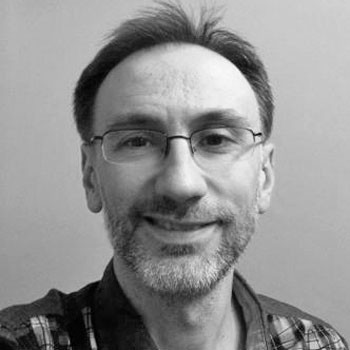
biologist, biochemist, researcher
Guillermo Velasco was born in Madrid, studied Biology and obtained his PhD degree (1997) at the School of Biology of the Complutense University, Madrid, Spain. After defending his PhD, he got an EMBO long-term fellowship to work in Philip Cohen’s laboratory at the MRC Protein Phosphorylation Unit (Dundee, Scotland) on a project aimed at studying the regulation and of the Rho-activated protein kinase (ROCK).
On the year 1999 he got a position as Assistant Teacher at the School of Chemistry of the Complutense University and since the year 2003 he is Associated professor of the Department of Biochemistry and Molecular Biology I.
On the year 2001 he started a line of research aimed at investigating the mechanisms underlying cannabinoid antitumoral action as well as at optimizing the potential clinical utilization of these agents in cancer therapies.
Different lines of research in his group are currently investigating the role of endoplasmic reticulum stress, autophagy, apoptosis, intracellular trafficking of ceramide and regulation of mTORC1 and mTORC2 in cannabinoid antitumoral action as well as the participation of growth factor receptor-activated pathways in the resistance to the antineoplasic actions of cannabinoids.
| 2017 | Towards the utilization of cannabinoids as anticancer agents | Abstract |
|
A large body of evidence shows that cannabinoids, in addition to their well-known palliative effects on some cancer-associated symptoms, can reduce tumour growth in animal models of cancer and specifically of gliomas. The mechanism of cannabinoid anticancer action relies, at least largely, on the ability of these agents to stimulate autophagy-mediated cancer cell death. Moreover,the combined administration of cannabinoids and temozolomide produces a strong anticancer effect, which correlates with an intense activation of the signalling route that triggers the activation of cytotoxic autophagy. Research conducted in our group has also led to the identification of mechanisms of resistance to cannabinoid anticancer action. For example, up-regulation of the growth factor Midlkine (MK) promotes resistance to cannabinoid anticancer action in gliomas via stimulation of the Anaplastic Lymphoma Kinase tyrosine kinase receptor (ALK); and could be a factor of bad prognosis in GBM patients. All these preclinical findings have facilitated the promotion of a clinical study to investigate the safety and efficacy of the combined administration of the cannabis-based medicine Sativex and temozolomide in recurrent GBM. In this presentation I will discuss these issues and also other possible future studies that may help to clarify whether cannabinoids may be useful as anticancer agents in patients with gliomas or other cancers. |
||
| 2017 | Towards the utilization of cannabinoids as anticancer agents | Workshop |
| 2019 | Towards the use of cannabinoids as anti-cancer agents | Abstract |
|
A large body of evidence shows that cannabinoids, in addition to their well-known palliative effects on some cancer-associated symptoms, can reduce tumour growth in animal models of cancer and specifically of gliomas. The mechanism of cannabinoid anticancer action relies, at least largely, on the ability of these agents to stimulate autophagy-mediated cancer cell death. Moreover, the combined administration of cannabinoids and temozolomide produces a strong anticancer effect, which correlates with an intense activation of the signalling route that triggers the activation of cytotoxic autophagy. Research conducted in our group has also led to the identification of mechanisms of resistance to cannabinoid anticancer action. For example, up-regulation of the growth factor Midlkine (MK) promotes resistance to cannabinoid anticancer action in gliomas via stimulation of the Anaplastic Lymphoma Kinase tyrosine kinase receptor (ALK); and could be a factor of bad prognosis in GBM patients. All these preclinical findings have facilitated the promotion of a clinical study to investigate the safety and efficacy of the combined administration of the cannabis-based medicine Sativex and temozolomide in recurrent GBM. In this presentation I will discuss these issues and also other possible future studies that may help to clarify whether cannabinoids may be useful as anticancer agents in patients with gliomas or other cancers. |
||
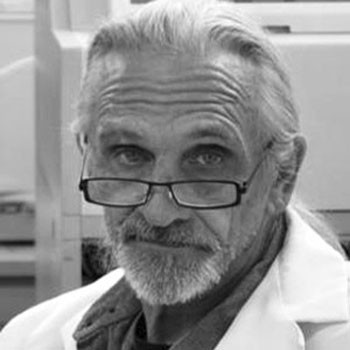
zoologist, biochemist, pathologist, researcher
Paul Hornby has a B.SC. degree in zoology, a M.SC. degree in biochemistry and a PhD in human pathology. He was the founder and president of Hedron Analytical Inc., a small
company providing chemical analyses of herbal preparations. He has been
granted authority by Health Canada for a laboratory that can legally
analyze cannabis for it’s cannabinoid profile and chemical content. He is the author of numerous studies and articles relating to
cannabis (hemp, chemical composition, method of extraction of active
cannabinoids).
| 2014 | The three way split between the genetics of cannabis and the ratios of THC and CBD | Abstract |
|
This lecture will talk about a recent discovery by our laboratory that lends credence to earlier findings by molecular geneticists that the genetics of cannabis only goes three different ways. We call this the “three-way-split”. Associated with the different profiles (ratios of THC to CBD) are the different effects and medicinal properties of the specific profiles. |
||
| 2015 | The “ABC of CBD” or the importance of cannabidiol | Abstract |
|
Cannabidiol (CBD) holds a greater medical future than Tetrahydrocannabinol (THC) although they work synergistically in being effective against many illnesses; CBD has a profound efficacy with only small amounts of THC needed. The greatest difference between THC and CBD is that THC is psychoactive and can lead to a potentially unpleasant (non-fatal) overdose, whereas this effect does not occur with CBD. Cannabidiol has been shown clinically to be a powerful anti-oxidant and anti-inflammatory and also brings about pain relief with a marked reduction in anxiety. Cannabidiol (CBD) is normally recommended as a daytime medicine for mental clarity, focus and anxiolytic properties as well as anti-cancer, anti-inflammatory and anti-convulsent (epilepsy) effects |
||
| 2015 | Decarboxilation and standarization | info |
|
The workshop will focus on the process and importance of standardization and decarboxylation of cannabis for medical purposes. |
||
| 2017 | Cannabis Renaissance: A Revolution in Modern Medicine | Abstract |
|
Seeds of the cannabis plant have been carried with humans for thousands of years, planted and cultivated in virtually every corner of the planet and utilized for its many qualities, by peoples everywhere. It is only in the past 100-odd years that cannabis has come under prohibition as a result of competition with various industrialists near the turn of the last century, (Nylon, Petroleum, Pulp and Paper, to name a few). But it’s hard to keep a good plant down… Even under prohibition a few committed
researchers continued to investigate the properties and attributes of cannabis,
that eventuallylead to a number of extremely important and groundbreaking
discoveries. In the seminar we will discuss the discovery of THC, the finding
of the receptor that is activated by THC, the elucidation of, what is now
called the endocannabinoid system and the resultant innovation of “the
entourage effect”, a concept that could potentially revolutionize modern
medicine. The pharmaceutical industry, that now
controls most of the medicines we use and indeed have access to, has always had
the mandate of synthesizing ‘single’ molecule medicine that it can patent and
own (no one can patent and own a plant or natural compound). These synthetic
medicines are well known to cause serious side effects, that are often fatal, killing more than
100,000 people per year in the United States, alone.This does not occur with
natural, plant medicines. There has never been a reported death due to cannabis, alone. In fact many consider the plant as an anti-toxin. Interestingly, new research is demonstrating, time and time again, that single active molecules from cannabis that are synthesized have a completely different effect than plant extracts, or the whole plant medicine. And this is where the revolution begins. The entourage effect (active plant molecules or compounds together in a natural mixture), make the safest and most efficacious cannabis medicine. This concept has the power to revolutionize modern medicine, as we know it. In the seminar we will discuss the efficacy of cannabis extracts compared to synthetic cannabinoids and drugs and, more importantly their safety. We will also review recent scientific literature demonstrating the difference in effectiveness of natural vs. synthetics and how the entourage effect has the potential to revolutionize modern medicine. The power of the cannabis! A. Paul Hornby Ph.D. December 2016. |
||
| 2017 | Cannabis Renaissance: A Revolution in Modern Medicine | Workshop |
| 2019 | Exploiting the Benefits of Cannabis | Abstract |
|
Legal cannabis is now a reality in Canada as it soon will be for many other countries around the world. But what does this mean for the medical user, through the transition to legality and beyond? There was a time in Canada that people would go to jail for possession of cannabis, but it was only through precedent setting court cases, persons with AIDS or epilepsy, for example, standing up for their rights, that cannabis is now legal. And, of course, this was backed by the mushrooming scientific evidence that had been accumulating since the discovery of the receptor that binds thc and the subsequent endocannabinoid system. This major medical find (as big as DNA and insulin), has received much attention in the past two decades and there is still much more to learn. Now that cannabis is legal in Canada we have an opportunity to study its effects, with groups of people that did not present with prohibition. We are currently beginning project with the Mohawk Nation in Ontario, Canada. The organization is called the National Indigenous Medical Cannabis Association, that has been distributing cannabis to a membership for a number of years. Nimca, has full laboratory capabilities (HPLC, GC/MS) to quality control and standardize its cannabis. The purpose is to use the Nimca dispensary (Legacy 420) as a hub for a harm reduction study using cannabis to curb the number of opiate related deaths, that is currently epidemic in Canada, particularly among the indigenous. In this presentation we will outline our reasons for using cannabis as a harm reduction agent, its relationship to opiate use, pain and opiate withdrawal. And how we are putting cannabis medicine to work in the legal environment. |
||
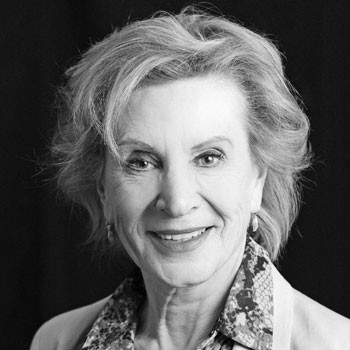
biochemist, researcher
Rojena v Ljubljani, je leta 1983 doktorirala iz biokemije na Univerzi v Ljubljani. Od leta 1996–2018 je bila direktorica Nacionalnega inštituta za biologijo, na katerem je ustanovila Oddelek za genetsko toksikologijo in biologijo raka, ki ga je vodila do leta 2004, zdaj pa je vodja raziskovalnega programa tega oddelka. Od 2004 je redna profesorica in poučuje biokemijo raka na do in po-diplomskem študiju biomedicine na UL. Svoj akademsko pot je začela na Oddelku za biokemijo in molekularno biologijo na Inštitutu Jožef Stefan, z vmesnimi prekinitvam, ko je delovala Pediatrični kliniki UKC, na podoktorskem izpopolnjevanju na Wayne State University v Michiganu in kasneje tudi kot gostujoča profesorica v Albert Einstein MC v Philadelphiji ZDA ter gostujoča profesorica na Univerzi Sao Paolo v Brazilij.
Področje dela Tamare Lah Turnšek obsega dokaj velik opus, in sega od področja encimatilke in proteoiznih encimov ter biološke in molekularne raziskave rakavih obolenj, kjer je bila vedno tesno povezana z biomedicinskini oz. s kliničnini raziskavami. V zadnjem času so osredotoča na raziskave rakavih matičnih celic in na raziskave mezenhimskih matičnih celic v kontekstu zdravljenja raka. Pri tem je v svojem delu spremljala tudi vpliv naravnih spojin, kot je ksantohumol, resveratrol in v zadnjem obdobju predvsem konoplja oziroma kanabinoidi kot protirakave učinkovine.
| 2019 | Cannabis and cancer | Abstract |
|
Cancer is multimodal disease that could not be targeted by a single therapy, as has been demonstrated in particular in brain tumors. Among these, glioma in its most advanced stage, the glioblastoma, is highly aggressive and therapeutically non-responsive tumor in humans. The modern treatment modalities, surgical removal, irradiation and chemotherapy are supported or even replaced by adjuvant treatment strategies, including immunotherapy and more holistic approach by natural substances, e.g. flavonoids, phenols, terpenes and cannabinoids. The evidences have accumulated that cannabinoids inhibit growth in invasiveness of tumor cells and continues to be solidified, based on cellular experiments in vitro and in animal studies, but unfortunately still not sufficiently from human clinical studies. In addition, due to large genetic micro-heterogeneity and further epigenetic transformation of recurrent glioblastoma, it is hard to predict how an individual patient will respond to cannabinoid treatment. Here, we aimed to examine the individualized patients'tumor response to the two most active cannabinoids, i.e. THC ad CBSD in terms of their potential synergistic effects on cell viability and apoptosis. As glioblastoma are classified intothree subtypes that differ significantly in their genetic fingerprints, patients’ survival rate and chemo- and radio-resistance, we are correlating their in vitro response to the individual tumor subtype. In addition, the levels ofat leasttwo cannabinoids CB1 and CB2 differ significantlyamong the patients, so we also need to explore, weather these may determine the response to the tumors in vitro more or less than to the tumor subtype. These data should reveal how to personalize potential cannabiboids' therapy to be most effective. |
||
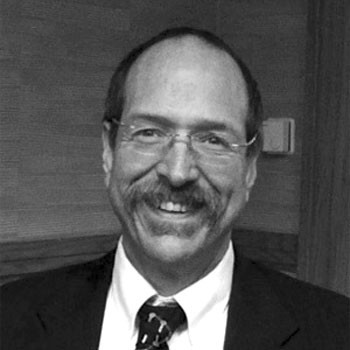
molecular biologist, biochemist, researcher
Dr. Robert Melamede has a Ph.D. in Molecular Biology and Biochemistry from the City University of New York. Dr. Melamede is recognized as a leading authority on the therapeutic uses of cannabis, and has authored or co-authored dozens of papers on a wide variety of scientific subjects.
Member of several scientific boards (International Association for Cannabis as Medicine, the Scientific Advisory Board of Americans for Safe Access, Sensible Colorado, Scientific Advisor for Cannabis Therapeutics).
www.drbobscannabisawakeningfoundation.com
| 2014 | Cannabinoid system – physics of life and its social impact | Abstract |
|
This lecture will focus on how the physics, developed by Nobel laureate Ilya Prigogine, provides a basis for understanding the origins of life and evolution. We will see a unique evolutionary occurrence with the development of the vertebrate lineage. All vertebrates contain cannabinoid receptors that uniquely, homeostatically regulate all of their body systems (circulatory, digestive, immune, musculo-skeletal, nervous, reproductive, tequementary). From a holistic point of view, we will see that variations in endocannabinoid activity can have a profound effect on our social systems. In line with evolutionary history, we will see how critical it is for human survival to increase cannabinoids activity at this point in human evolution. |
||
| 2015 | Life, Evolution, Endocannabinoids, and the Survival of Homo sapiens | Abstract |
|
Far from equilibrium thermodynamics provides a foundation for understanding life, evolution, and the unique role played by the endocannabinoid system in these processes. The metabolic underpinnings of life can be regulated by cannabinoids in order to promote health and longevity. They do so by regulating the negative effects of excess free radical production through their ability to control fat and carbohydrate metabolism. An increase in cannabinoid activity is necessary for the health modern man and human society. Marijuana has become an essential nutrient. |
||
| 2015 | Evolution, Adaptability and Cannabinoids | info |
|
The workshop will focus on functioning and importance of cannabinoids. |
||
| 2017 | The CB1 Receptor and the Evolution of Humanity, Past, Present and Future | Abstract |
|
In all body systems, cannabinoids, including THC, function as anti-aging compounds through their ability to inhibit the negative consequences of excess free radical production. Cannabinoids, both from the plant (phytocannabinoids) as well as those we produce (endocannabinoids) should be viewed as the “oil” of life, as an essential nutrient, as a food. They help protect us from the “friction” of life created by the free radicals that are responsible for all age-related illnesses including cancers. Keep in mind that free radicals are also necessary for life because they provide feedback control for homeostasis of all biochemistry. Free radicals are both necessary and destructive. They must be appropriately controlled for optimal survival. THC protects differentiated cells that are, for required efficiency, largely burning free radical producing carbohydrates as fuel. THC also helps protect cells when they are overworked and producing too many free radicals by turning on safe and efficient, cellular recycling (autophagy) pathways. Autophagy occurs when cells are burning fat as their main energy source. As a consequence of cannabinoid’s ability to regulate cellular energy sources to optimize homeostasis, they have profound health benefits. Because of their global metabolic homeostatic capacity, cannabinoids function as adaptogens. Hence, they have profound healing properties. The global cannabis awakening is driven by individuals who seethe improvement in human health that cannabis provides. All around the world, people have clearly demonstrated these benefits to themselves from direct personal experience. Cannabis benefits most of man’s illnesses becauseour endocannabinoid system is a fundamental regulator of all aspects of human existence. The use of genetic engineering, to eliminate the CB1 receptor in a strain of mice,thereby creating a knockout mouse, has demonstrated the essential nature of CB1 activity. These mice die very prematurely, and are too afraid to move around the cage because they're so stressed without any CB1 simulation. Today, the greatest global harm to humanity
results from illnesses that characteristically produce excess free radicals.
HIV, for example, has evolved in the highly differentiated immunological cells
of primates and man. It requires the carbohydrate-based metabolic machinery
that supported its evolution. When electron transport carbohydratecatabolism is
reduced sufficiently, and replaced by safer fat burning, the viral infective
process does not have the energy and resource support required for a successful
infection. The cannabis awakening is spreading around the world because of the beneficial experiences that people everywhere are having. People are demanding change. As governments protect the special interests that have helped support them, many people are choosing safer, cheaper more efficacious cannabis-based medicines and nutritional support. High THC, whole plant cannabis oil extracts can efficiently and effectively control both HIV and Kaposi sarcoma. HIV is the leading cause of death on the
African continent. Most people infected with the virus go untreated. HIV can
inexpensively and successfully be controlled with cannabis extracts in the
absence of antiretroviral drugs. HIV-associated Kaposi's sarcoma is the number
one cancer in Africa. There is no effective treatment for people suffering from
Kaposi. They die painful horrible deaths. Cannabis extracts completely
control this deadly virus-induced cancer. The scientific perspective presented can be extended to metabolic syndrome and it's associated consequences, heart disease and diabetes. Additionally, The matrilineal inheritance of mitochondria is readily explainable. The medicinal, nutritional and industrial
benefits documented herein only scratch the surface of the benefits that this
plant can provide humanity now that the true value of the cannabis plant is
becoming common knowledge. People resist change, but most will embrace it when
it cures cancer and relieves pain and suffering. The synergy between the
people's observations and modern science makes the continued expansion of
cannabis use inevitable, unstoppable and irreversible. Cannabinoids fine-tune a cell's energy production in order to protect it from excess free radical production. Consequently, cannabinoids have allowed for the evolution of the vertebrate brain, reaching its high point with humans. Evolution is the direct manifestation of the universal creative force. It selects for adaptability. The entire biosphere is one large unfolding chemical reaction. All life forms are simply quantized probes for adaptability. There is a constant back-and-forth between an organism adapting to his changing environment and changing its environment by doing so. Today the planet is undergoing a far from equilibrium phase change. The fluctuations of all the variables representing man’s interface with nature, and of nature itself, have become extreme. The decline of species, the variability of nature's chemicals interactions altered by man-made pollutants, the fluctuations of our financial establishments, of human migration, and of human behavior in general, are indicators of the gross rearrangement that has begun. It will result in either the collapse of societies or their rearrangement into a more cooperative, peaceful, and healthy world as cannabinoid content of human biochemistry globally increases as it always has. |
||
| 2017 | The CB1 Receptor and the Evolution of Humanity, Past, Present and Future | Workshop |
| 2019 | What if? | Lecture |
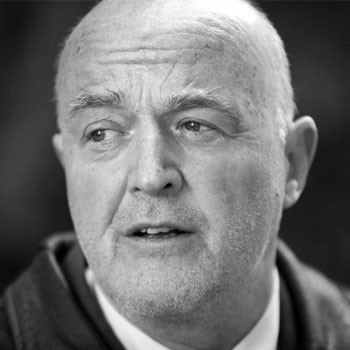
medical doctor, public health specialist, researcher
Finished medical school at University of Ljubljana School of Medicine, Ljubljana, Slovenia, in 1981 and earning a Master’s in Science of Public Health at University of Zagreb School of Medicine in 1987. He subspecialised in addiction medicine at Colorado University Health Science Centre, Addiction Research and Treatment Services, Denver, Colorado, USA and at National Institute on Drug Abuse, Addiction Research Centre, Baltimore, Maryland, USA in 1986–1990. As the Permanent Correspondent of Slovenia in The Pompidou Group ( Council of Europe) and the World Health Organization’s Slovenian National Coordinator for Drug Problems he contributed considerably to European drug policies and research by promoting the evidence base of policy and addressing ethical and human rights aspects. He was involved in developing and passing state legislation on drug prevention and treatment of addictions. As a member of the EU Science Group of European Alcohol and Health forum he provides scientific advice and guidance on matters of alcohol-related harms and developing and maintaining a common evidence base at EU level. He was National Expert Consultant for The Mobilizing Entrprises and Workers to Prevent substance Abuse in CEE Project (ILO, 1996–1999). His current work has spanned a diverse range of topics, including stress, psychosocial risks and mobbing addictions in alcohol and other drugs, health and social care for vulnerable populations, ethical and human rights aspects of public health, promotion mental health and patients’ rights, including use of cannabis as a medicine . His research focuses on social, economic, political, environmental and human rights determinants of public health conditions, in particularly the determinants of psychosocial health and social responsibility at workplaces. Also, he is also dedicated coworker of the International Institute for Cannabinoids (ICANNA) http://www.institut-icanna.com/, which is a non-profit NGO, which was formed by the collaboration of partners from Slovenia, Germany and Austria. The purpose of the institute is a multi-national cooperation in the field of cannabinoid research. The institute engages in scientific research and educational activities and discussions in the field of medical cannabis. The Institute achieves its goals through the implementation of research, development, analysis, education, training, counseling, monitoring, publishing, informing, raising awareness, proposing expert opinions or standpoints, offering expert advice and similar. The institute carries out its own projects as well as projects on behalf of others. Dr. Nolimal is the author and/or co-author of more than 300 scientific articles, books, editor or co-editor of different publications in the field of public health (social medicine) in Slovenia. He often speaks nationally on the sensitive public health topic and social responsibility is frequently quoted in the media.
| 2014 | Linking research in public health with policy and practice: The Cannabis Case | Abstract |
|
In 2014, cannabis became the topic of many discussions in the professional and laic circles in Slovenia. However, many debates and media coverage is still full of unverified information, so that the proponents of prohibition of cannabis and its opponents gain supporters on their side. Probably the greater part of the general public does not support full legalization of cannabis, especially for recreational purposes. But a larger part supports evidence-based policy reforms on cannabis, particularly in regard to so called »industrial« and »medical« cannabis. Because of existing international conventions or regulations which govern the classification of illicit drugs, prejudices, beliefs and interests, Slovenian legislation and policy towards cannabis is lacking adequate evidence-based support and has little to do with life, empathy and humanity. The aim of linking research in public health with policy and practice is to improve evidence-based legislation and policies towards cannabis. This contribution reveals some myths about cannabis and summarizes the key scientific findings. |
||
| 2014 | Linking Research in Public Health with Policy and Practice: Moving Slovenian Official Policy Toward Cannabis from Deadlock | Abstract |
|
In recent years, the use of Cannabis has become a much debated topic in professional and laic circles, in Slovenia and abroad. However, this phenomenon is due to numerous and complex links with values and views, which only a few authors tackle without prejudice, and is also reflected in the collection of facts. Cannabis is not a standardized commodity. The proportion of THC and other Cannabinoids in Cannabis can vary greatly, so it is difficult to compare individual research results. We have recorded a mix of statistical correlation and causal relationships, which is evident from the unconvincing ‘entry theory’ (use of Cannabis should lead to use of more dangerous drugs). It is of no wonder that polls suggest that Cannabis is a plant/substance which continues to polarize public opinion. Media coverage is full of unverified and tendentious information, so that the proponents of prohibition of Cannabis and its opponents gain supporters on their side. Reliable information is essential for an adequate response, enabling greater efficiency of measures, if used. According to a National Institute of Public Health (NIJZ) survey from 2011/12, 15.8% of the population aged 15–64 have used Cannabis recreationally at least once in their life; 4.5% in the past year, and 2.3% (or 32,141 residents) of Slovenia have used Cannabis in the last month. We do not know any cases of overdose leading to death. 64% of the public does not support the full legalization of Cannabis, especially for recreational purposes, although a large part supports evidence-based reform of Cannabis Policy for medical purposes. Due to outdated international conventions and regulations governing the classification of illicit drugs, prejudices, beliefs and (commercial) interests, Slovenian legislation and policy towards Cannabis is lacking adequate evidence-based support and has little to do with life, empathy and humanity. The aim of linking research in public health with policy and practice is to improve evidence-based legislation and policies towards Cannabis. In this context, the National Institute of Public Health (NIJZ) cooperates with both policy-makers in ministries and NGO’s and civil initiative. The fact is that the international scientific community has not reached a consensus on the understanding of the degree of harmfulness of Cannabis and effectiveness of different measures. Cannabis is not a harmless substance but its dangers have been overstated, and our existing legal, social and health policies are disproportionate to the effects of individual and social damage. UN Conventions are a major contributor, responsible for the classification of Cannabis among the most dangerous drugs that require strict international and national control. In this context, the problem of solving drug related issues is getting more and more complex; extensive damage caused by its prohibition, however, raises concerns for public health and well-being. The overall number of violations of the law related to possession and use of Cannabis has been increasing steadily for almost a decade. However, legislation regarding Cannabis in Europe is not homogeneous. Countries introducing decriminalization along with strict legal regulation of Cannabis are both softening and simultaneously reducing the unregulated black market and recording encouraging trends in the field of safety and health. There is a need everywhere for better and stricter regulation of both the Cannabis black market and the legal tobacco and alcohol trade, which will never be achieved by strengthening the repression. It is also important to highlight opinions/initiative of patients and civil society regarding their role in legalization of medical Cannabis in Slovenia: doctors should respect patients’ wishes, even if they are sometimes contrary to what they consider is best for the patient. Patients expect from medical organizations and competent ministry to advocate for vulnerable groups and health in general and take a more decisive role in reducing harmful effects of Cannabis prohibition. With the aim to move the Slovene official policy toward Cannabis from deadlock, it would be advisable to consider the following steps:
|
||
| 2015 | Science, ethics and politics in classifying the dangers of drugs | Abstract |
|
Over the past years the scientific, political and public knowledge have changed quite significantly and recent debates about the classification of certain drugs, especially cannabis, have led to questions about the clarity, reliability and ethics of the current system and whether it remains fit for purpose. The scientific evidence and consensus are growing that the current classification of cannabis in the UN system represents a historical anomaly and should be reviewed at the earliest opportunity. It has been argued that cannabis lacks the high abuse potential required for inclusion among the most dangerous drugs. Also, the discovery of the cannabinoid receptor system in the late 1980s revolutionized scientific understanding of cannabis’ effects and provided further evidence that it has potential beneficial medical effects. The 2016 UNGASS on drugs provides an opportunity to re-examine these issues. We hope this re-examination will consider the scientific findings regarding cannabis’s safety and efficacy in some medical conditions as well as evidence on the possible health risks associated with cannabis consumption, particularly in its smoked form. The UN should guide national drug control and classification systems to be predominantly science, ethics and human rights informed, including all psychoactive plants and substances (whether licit or illicit), otherwise the credibility of such approaches will be undermined. |
||
| 2017 | Human rights, public health and medical cannabis | Abstract |
|
The beneficial medical properties of
cannabis plant (Cannabis sativa L.) are widely recognized. Yet the plant is
still listed in the most
tightly restricted category reserved for illict drugs that have "no
currently accepted medical use". This status has prevented the medical use
of cannabis and relevant research and triggered the debate between government officials on one side, and active members of civil
society, patients and individual doctors on the other side, whether to
legalize the production, possession and use of the plant for medical purposes. Public health is what we, as a society, do collectively to assure the conditions for people to be healthy, happy and feel-well. It refers to "the science and art of preventing disease, prolonging life and promoting human health through organized efforts and informed choices of society, organizations, public and private, communities and individuals." In many countries public health is already providing leadership on matters critical to medical cannabis and health and engaging in partnerships where joint action is needed. Also, it helps shaping a research agenda and stimulating the generation, translating and dissemination of the relevant knowledge and articulating ethical and evidence-based medical cannabis policy options. Human rights lens also inform the decision making processes and development of optimal medical cannabis policies. Human rights are often divided between those that protect individual, civil and political rights on the one hand, and economic, social, and cultural rights on the other. Human rights perspective recognizes, among others, the right of everyone to the highest attainable standard of physical and mental health and well being, including the right to treatment with medical cannabis and necessary services. However, in most countries, including Slovenia, medical cannabis policies are still the product of controversy and remain surrounded by controversy as they are implemented. Related ethical issues pose many moral and social dilemmas rather than black and white moral questions. The scientific considerations blend with political and ethical conflicts, questions of public and individual rights are central and scientific evidence should become imperative to inform appropriate regulation and prescription of the plant. Public health ethics requires careful balancing between individual interests in personal (e.g., autonomy, privacy, and liberty) and economic (e.g., contracts and property) freedoms on the one hand and collective interests in health safety and security on the other. Part of the public (society) already recognizes that cannabis prohibition clearly causes more harm than good. Many individuals and groups began advocating for effective government regulation of cannabis. Until recently, many medical doctors have been reluctant to publicly voice their opposition to the prohibition of the plant. But through scientific evidence and measuring patients’ experiences many doctors and other health professionals had recognized that prohibition was ineffective and harmful. One of the most egregious outcomes of cannabis prohibition was that many sick people could not legally access the medicine that could work best for them. At the same time, the prohibition had not prevented children from accessing the drug and it had led to the proliferation of more dangerous synthetic cannabinoids. This presentation will not offer clear-cut answers to many of the ethical issues raised. However, it will provide public with many perspectives on the role of public health concerning medical cannabis . For example: What is the meaning of the most common concepts in public health, such as: population, risk, harm, and benefit in the context of medical cannabis ? How does the population perspective differ from the individual perspective? When it is necessary and appropriate to intervene to protect human rights? And when it is necessary and appropriate to intervene to protect the public’s health? Are factors such as risk, effectiveness, cost, burdens and fairness the best ways to evaluate public health interventions ? To what extent should social justice be an advocating value in public health? It is essential to recognize that scientific and ethical arguments about the cannabis prohibition and access to medical cannabis have to be joined to political solutions. This may help us think more clearly and constructively about the medical cannabis challenge that will affect many types of health and social issues common with many people and life in communities. The presentation will provide many thoughts by both authors and some conclusions by first autor with which not everyone will necessarily agree but which can open dialogue with others. |
||
| 2017 | Human rights, public health and medical cannabis | Workshop |
| 2019 | Cannabis, Mental Health and Prohibition: a critical review of the relationship | Lecture |
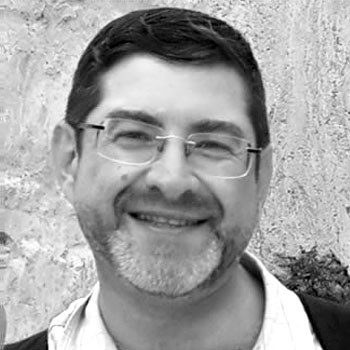
neuropsychiatrist
Dr.
Ilya Reznik has superior educational and professional record and
documented contributions to the field of neuropsychiatric research, such
as publications and other innovative activities.
Dr. Reznik has published many original papers (including controlled
trials), reviews and case reports in leading peer-reviewed journals in
field of clinical psychiatry and neuropsychopharmacology. His current
main interest is in the field of the medical use of cannabis and
cannabinoids, especially for various neuropsychiatric illnesses, such as
Chronic Pain Syndrome, Post-Traumatic Stress Disorder (PTSD), OCD,
Tourette syndrome, Parkinson’s and Alzheimer diseases etc.
During last 6 years he coordinates the activity of Israel National
Forum/Association for Medical Cannabis Research & Treatment. He is
Associate Member of The Canadian Consortium for the Investigation of
Cannabinoids (CCIC), Member of International Cannabinoid Research
Society (ICRS). In 2013 he was elected to Board of Directors,
International Association for Cannabinoid Medicines (IACM) and promotes
educational and international activity within IACM.
| 2015 | Practical issues on using the Cannabis as a Medical substance | Abstract |
|
Marijuana, botanically known as cannabis, has been around for thousands years. The medicinal and recreational uses of the cannabis have been known from the ancient times and marijuana was used as a legal form of the plant medicine till the1937-1941. Since that time, marijuana was included to the upper part (Schedule 1) of the list of controlled substances and its circulation (in any form) was announced as illegal and prohibited. During the last decade some European (Holland, Spain, Germany, Austria), American (Canada, several States in the USA) and other countries (Israel), agreed to re-acknowledge the positive properties of marijuana and decriminalized it’s usage for some certain medical conditions/indications. Nevertheless, the wide (and growing!) spreading of cannabis consumption among the population, mostly for recreational purposes, enhances the demand for better definition between medicinal and other usage of various forms of cannabis. The international clinical and regulatory experience, accumulated in the countries, already established the Medical Cannabis/Marihuana Programs, should be carefully and systematically studied and critically assessed, in order to elaborate the better (in the means of the Quality Control and Accessibility) model(s) for the reducing of public stigma, proper education of the health care professionals and to promoting medicinal uses of the cannabis. Based on my large clinical experience in this field, I will review (in short) the current Medical Cannabis/Marihuana Programs and will provide some suggestions and practical tips on wise (careful and safe) usage the Cannabis as a valuable Medical substance, especially for the patients with the various neuropsychiatric disorders. |
||
| 2015 | Practical issues on using the Cannabis | info |
|
The workshop will provide insight to whom treatment with cannabis should be suggested and to whom, probably, not. |
||
| 2019 | “To be, or not to be, that is the question”. Shared decision-making for cannabis medicines | Abstract |
|
Any health-related decisions should be made in partnership between the patient and the doctor. Both parties take steps to participate in the process of decision making. There is growing evidence that the public want more involvement in treatment decisions. Shared decisions may be harder to achieve when the patient is faced with a shocking, serious or life threatening diagnosis.During recent years, more and more clinical research affirms that cannabis can safely and effectively alleviate symptoms of serious and chronic medical conditions. Nevertheless, many patients, their relatives and caregivers are still hesitate, whether try is or not try a cannabis as a valuable remedy. They are routinely apply for this to their health care providers, but, unfortunately, despite all previous and, most important, recent achievements in this area, majority of physicians are unable to advise their patients anything clear and prefer to avoid or even ignore any discussion on this topic. In contemporary patient-centered care, an individual’s specific health needs (including cannabis-based therapy) and desired health outcomes are the driving force behind all health care decisions. Facing the further ongoing and increasing progress in cannabinoid medicine, responsible clinicians should educate themselves in this are in order to be able to maintain professional dialog and to practice well-balanced comprehensive shared decision making with their patients upon their demands and even to initiate a cannabis-based treatment to suitable for it patients. |
||
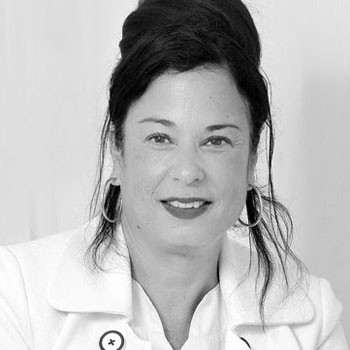
clinical nursing
Matron Inbal Sikorin is the Co-Founder and Chief Nursing Officer of NiaMedic. Prior to co-founding NiaMedic, Inbal was the Head Nurse of "Hadarim" nursing home at Kibbutz Na'an. There, Inbal founded a groundbreaking Medical Cannabis program for the elderly. For almost a decade, Inbal has been a world renown pioneer and expert in the Medical Cannabis field, treating and counseling thousands of patients over the years, with a special focus on exceptional treatment methods, developing treatment protocols and data analyses. Additionally, Inbal helped develop a Palliative Care Course for medical staff - a rich and comprehensive curriculum that has changed the world view of patient care and Medical Cannabis as a treatment option in nursing homes.
| 2019 | Geriatric medicine and medical cannabis | Abstract |
|
As population gets older, healthcare systems and governments are seeking for solutions to reduce healthcare costs and improve the quality of life of patients. With more than 10 years of clinical and research experience, and as the first to start treating older adults with cannabis, Inbal provides a very broad and interesting prospective regarding medical cannabis and its place as part of the overall medical care of patients.
|
||

asistant, researcher
Roman Štukelj is a member of the Laboratory of Clinical Biophysics, Faculty of Health Sciences, University of Ljubljana and an associate member of the Laboratory of Clinical Biophysics. The scope of his work includes properties of cell and phospholipid membranes with special emphasis on small (anisotropic) structures such as extracellular vesicles and nanotubes. Assessment of the concentration of extracellular vesicles in the isolates from peripheral blood underlays diagnostic methods for different widespread diseases (e.g. cancer, autoimmune disorders, neurodegenerative diseases), which may supplement or replace invasive procedures (e. g. biopsies), and estimate the risk for cardiovascular diseases.
His interest in cannabis started when he recognized its potential therapeutic benefits, by studying the literature. He is studying influence of different cannabinoids on the cell membrane and linking it with knowledge on mechanisms of formation and manipulation of extracellular vesicles. Also he published articles related to cannabis and the endocannabinoid system, nutrition and healthy lifestyle. He is attending professional meetings and conferences at home and abroad.
| 2019 | Cannabis as an essential food and its versatility | Abstract |
|
Hemp (Cannabis sativa subsp. sativa L.) was grow as an annual crop for food and fiber for many centuries around the world, and so is today. Hemp seed contains a wide range of vitamins in minerals and is a good source of essential unsaturated fatty acids and essential amino acids. In the second part of the lecture, the results of a research study on cannabinoid content in hemp in Slovenia from 2017 will be presented. |
||